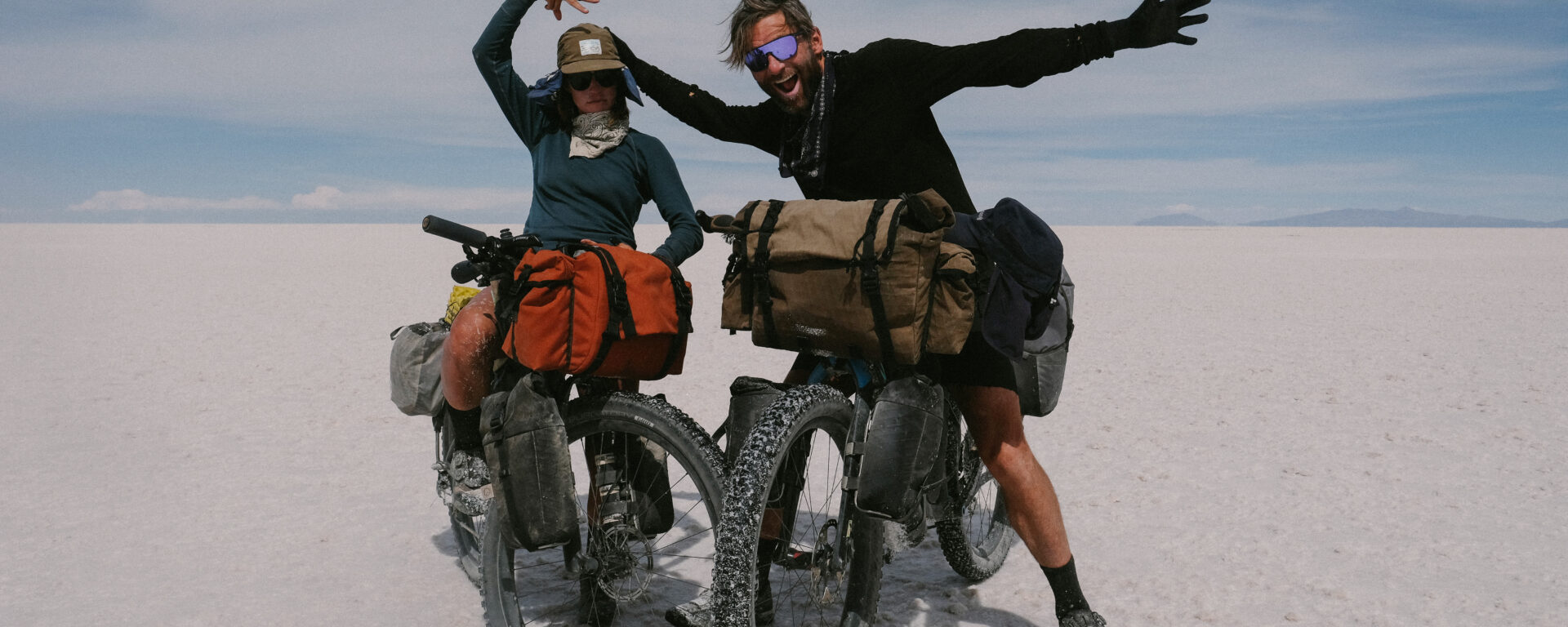Words and photos by Sarah Swallow
The setting was the Bolivian salt flats outside of Uyuni. The time was November 2019; Adam and I were one-and-a-half years into our relationship. It was the end of a month-long bikepacking trip that had started with getting stuck in La Paz during a coup d’état of Bolivia’s then-socialist President Evo Morales, and some of the most intense and frightening days we had ever experienced. We managed to salvage the trip by escaping La Paz in the wee hours of the morning to get around barricades blocking access to the airport and got on a flight to Arequipa, Peru. We started an alternative route that connected the Altiplano in southern Peru with a series of protected areas in northern Chile. Our route ended via a series of dried salt lake crossings, Salar de Surire and the Salar de Unini. By the time we finished the trip, the tension in Bolivia had died down, and we safely returned to La Paz for our flight back to the United States.
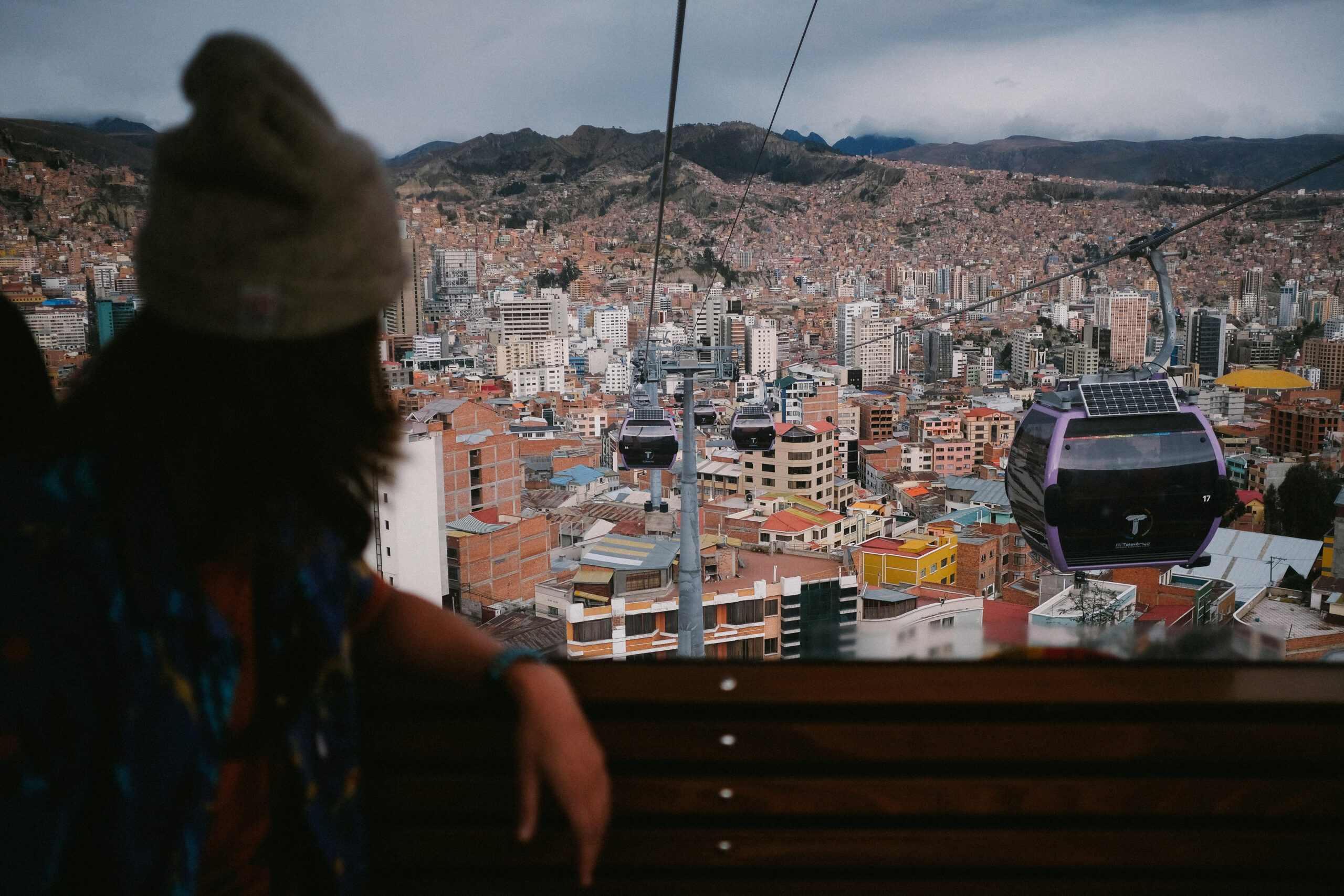
Despite the intense start, this trip stands out in my mind as one of our most successful as a couple. To me, success on a journey like this means staying connected, being present with ourselves, each other, and our surroundings, and having no significant conflicts or breakdowns. What supported this was the time we carved out each morning after packing up camp to stretch, journal, and check in with one another about where we were each mentally and physically and our expectations and intentions for that day.
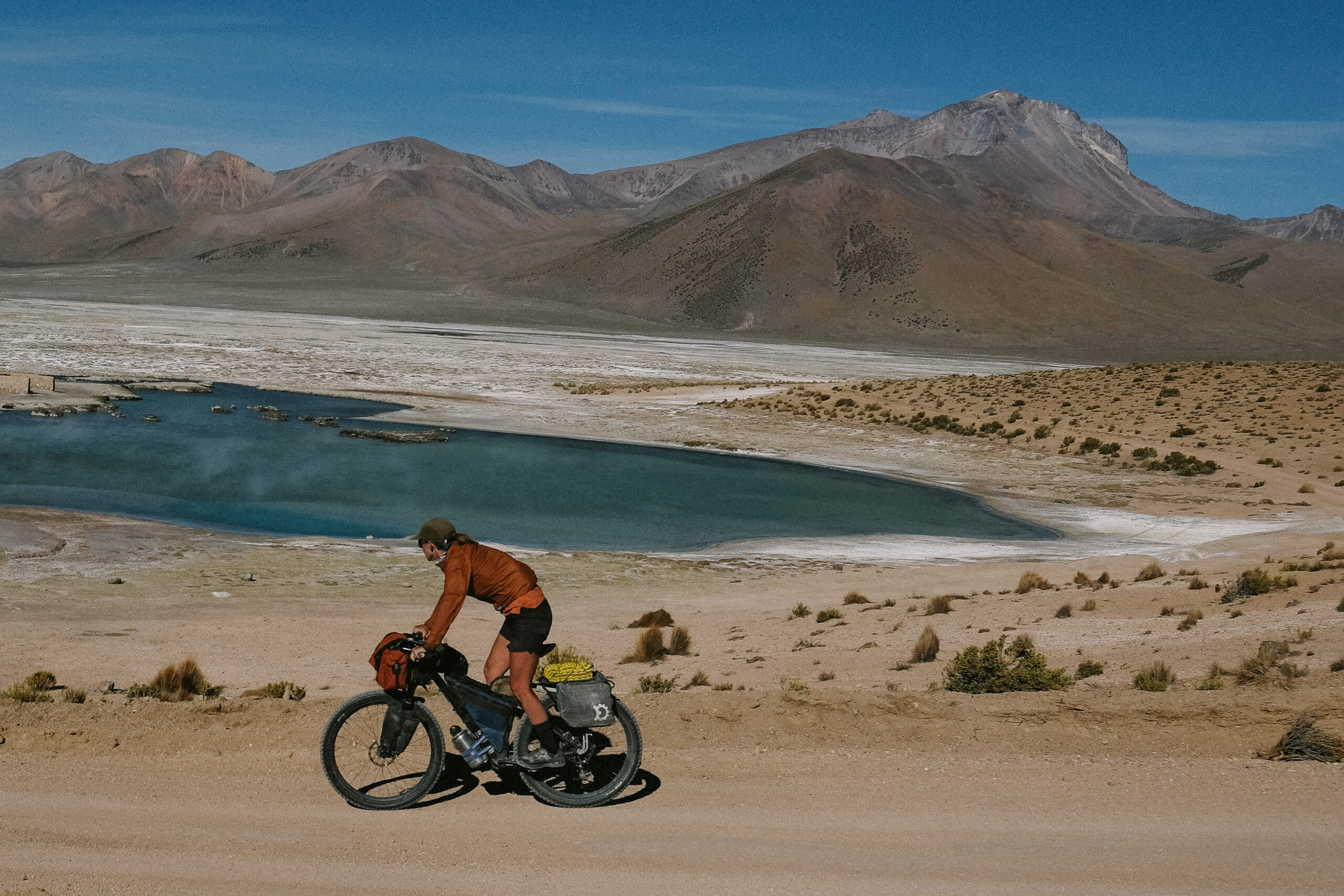
A highlight for us was when we stumbled upon a hot spring lake just as we were looking for camp one evening during a beautiful sunset. For the entire evening and the following morning, we reveled in the stunning landscape all around us: in the warmth of a mud bath within the lake and wildlife viewings of flamingos and vicuñas in the distance, solid meals of quinoa, veggies, and cheese for dinner and scrambled eggs and potatoes for breakfast. The whole experience was inspiring, romantic, fulfilling, and nurturing and propelled us down the route with more presence, connection, and engagement for the following few days.
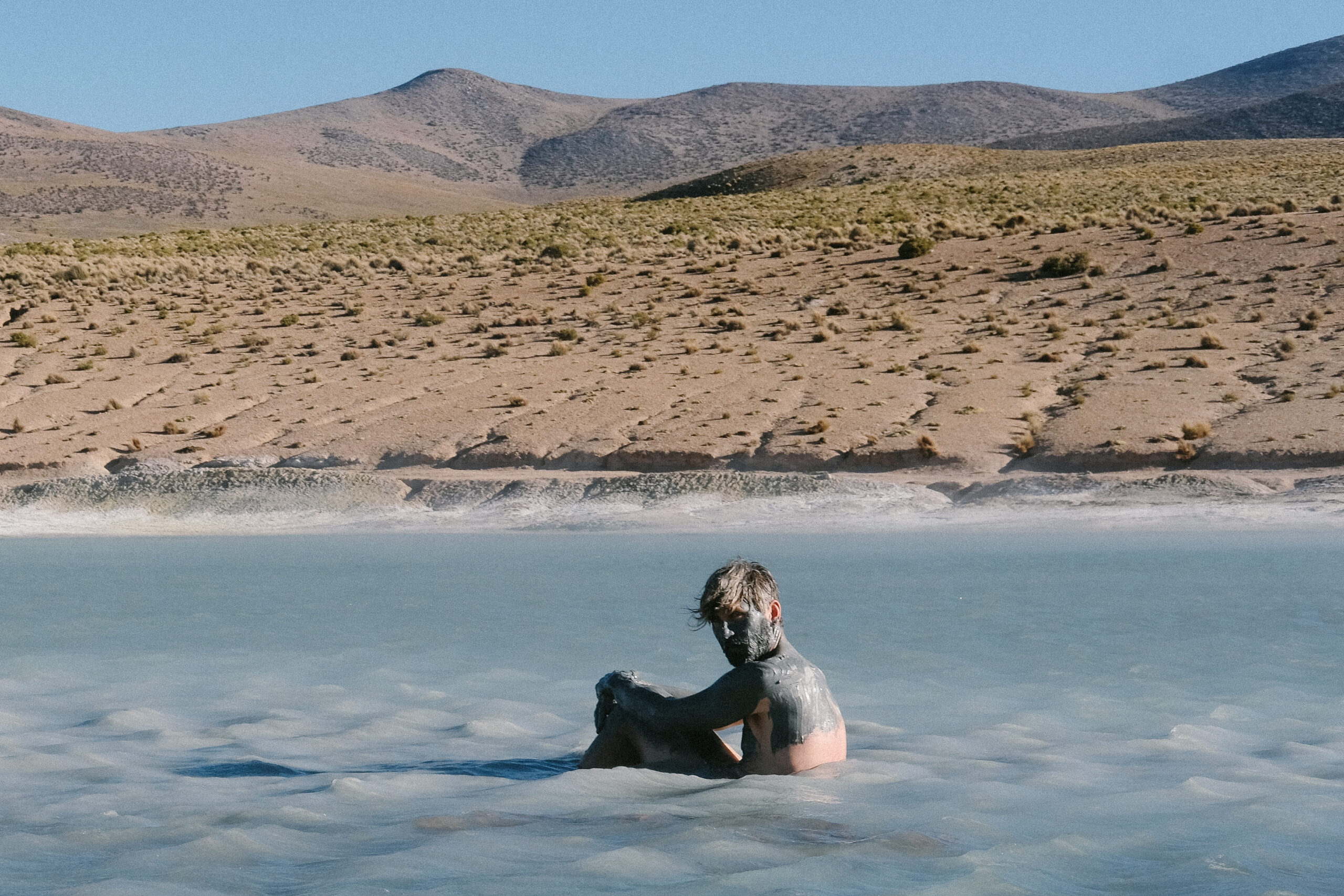
However, to counter any illusions of perfection, something between us happened on this trip that also stands out as one of the lowest moments we have experienced while traveling by bicycle as a couple.
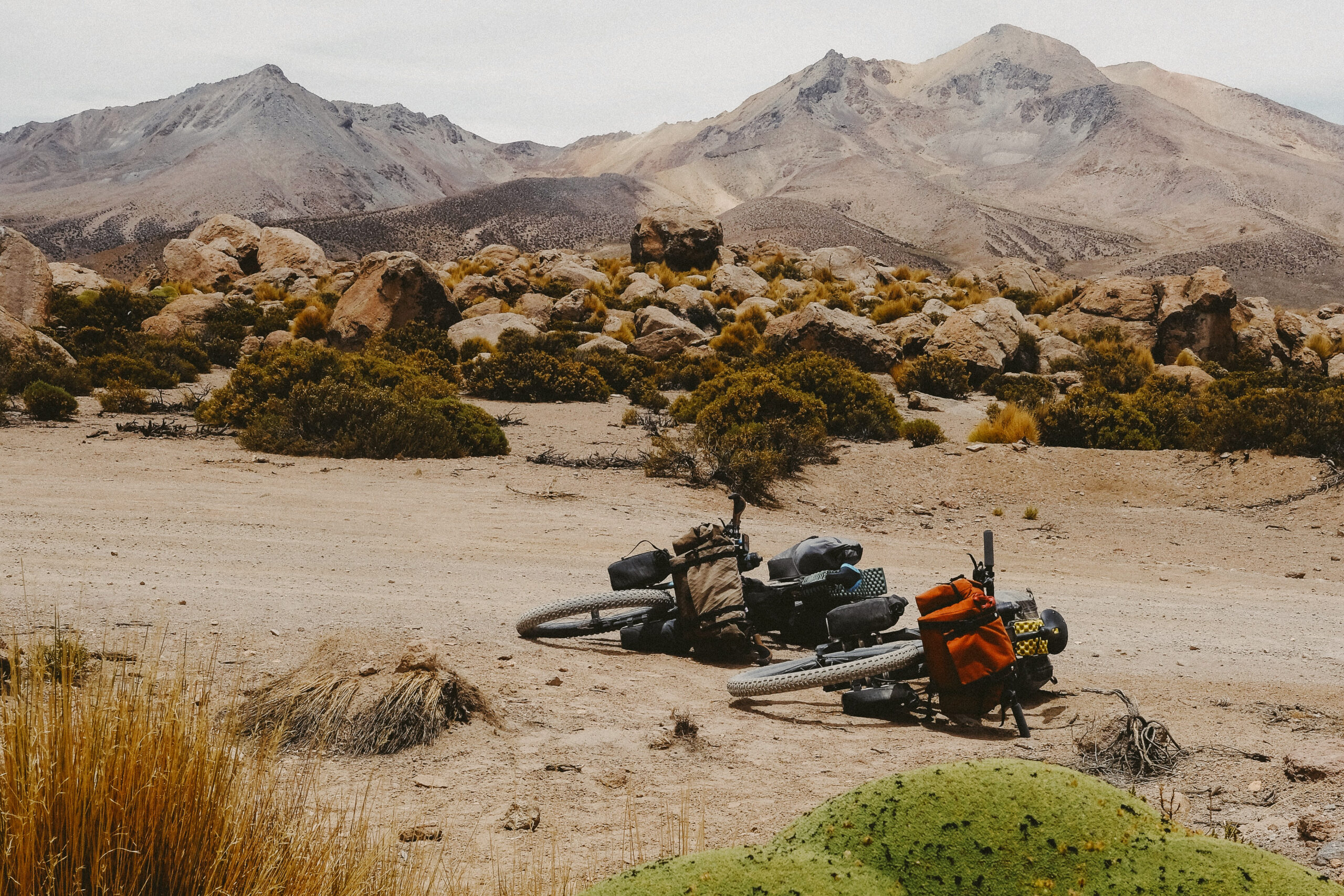
We were approaching the crossing of the final salt lake, Salar de Uyuni, the world’s largest salt lake, iconic for its vast expanses of bright-white salt with an occasional cacti-studded island. This crossing would be the final miles of our month-long trip to South America. Days before, we had run into another couple, bikepacking the same route in the opposite direction. They had told a funny story of running into another cyclist who had gotten separated from his group on the Salar de Uyuni. All four of us laughed; “how can you possibly get lost in such a place where you can see everything around you?”
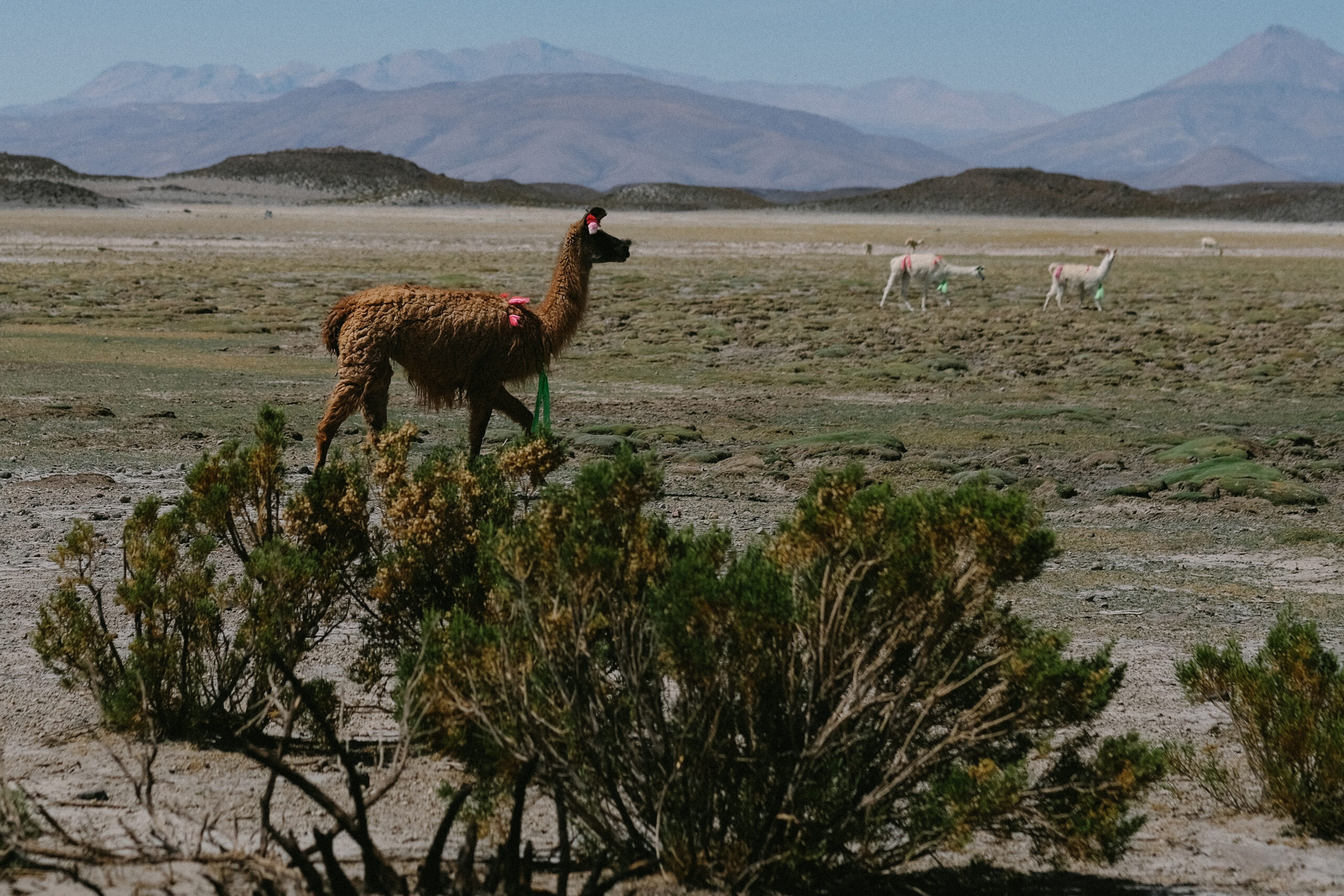
In the days before our crossing of Salar de Uyuni, we had reached Salar de Surire by way of some of the worst corrugated roads I have ever pedaled on a bicycle. By the time we had reached Surire, my nether region had been chafed raw. To make matters worse, a thin layer of water sat atop the salt of Salar de Surire. The spray from my tires ultimately soaked my shorts with salt water and created such intense burning and further abrasion on my already chafed skin that I was forced to remove my shorts altogether and ride the remaining stretch of the salt flat pantsless and standing up. The situation was pretty desperate, and I distinctly remember an intense exchange between Adam audibly expressing concern over my decision to remove my pants, my slow pace across the flat, and the impending darkness and freezing temperature of the night, while I, ignoring his concern, just focused on my discomfort and getting the crossing over with as soon as I possibly could. We took a day off after crossing Surire in a nearby town to clean our bikes and clothes and let my skin recover for crossing the Salar de Uyuni.
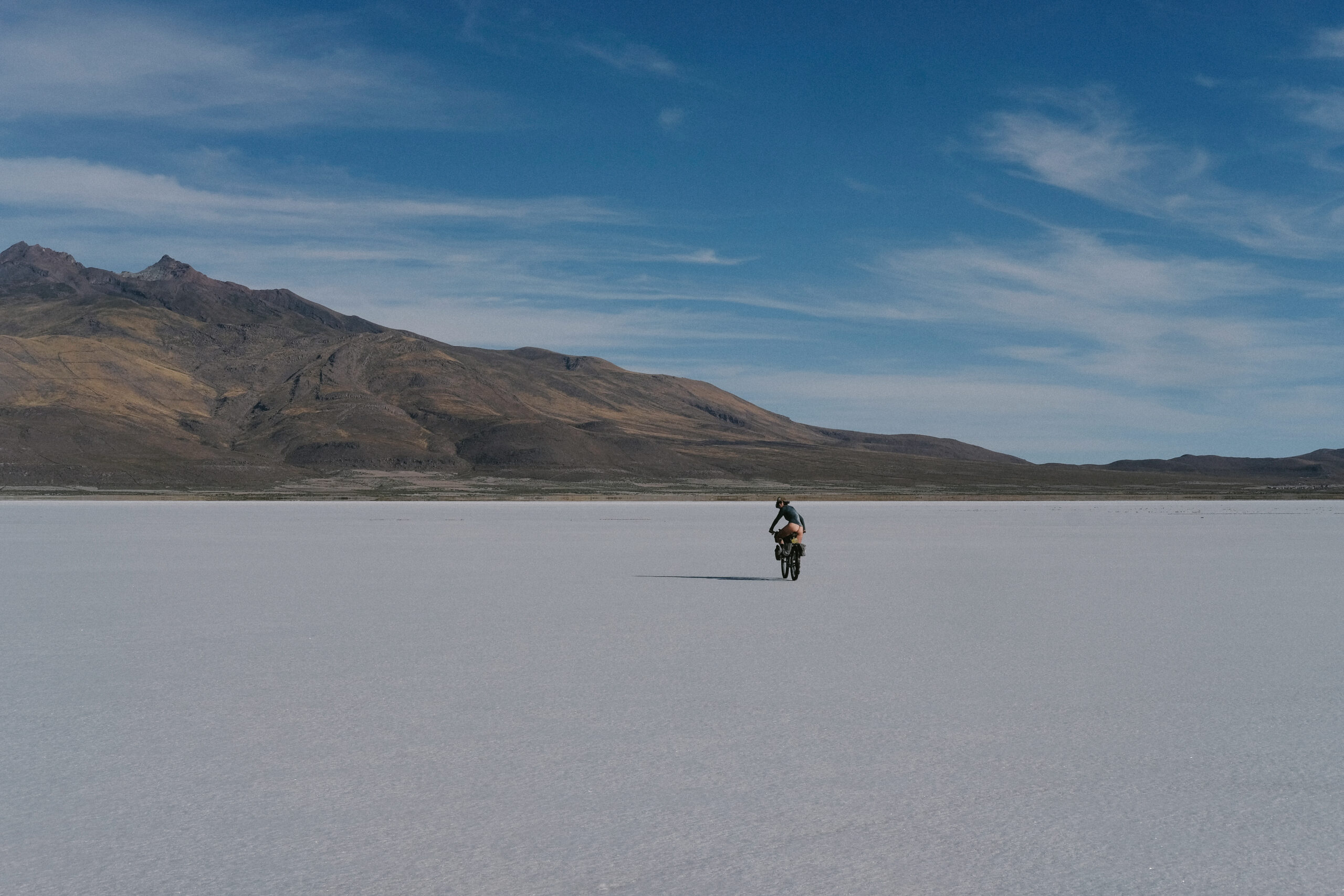
Our bicycle crossing of the Salar de Uyuni would take us 100 miles across the white expanse with one water resupply at the largest island, Incahuasi. We planned to ride it over two days, leaving plenty of time to enjoy one final night of camping in one of the most iconic places to ride and camp by bicycle. We had been imagining this night of camp for weeks and couldn’t wait to play with our photography in such a place. As it turned out, however, we had an experience that neither of us expected. Adam and I had a fight or disagreement within the first couple miles of our crossing, which resulted in us taking some space to ride our own pace for a bit, as we often do in moments of conflict while on tour.
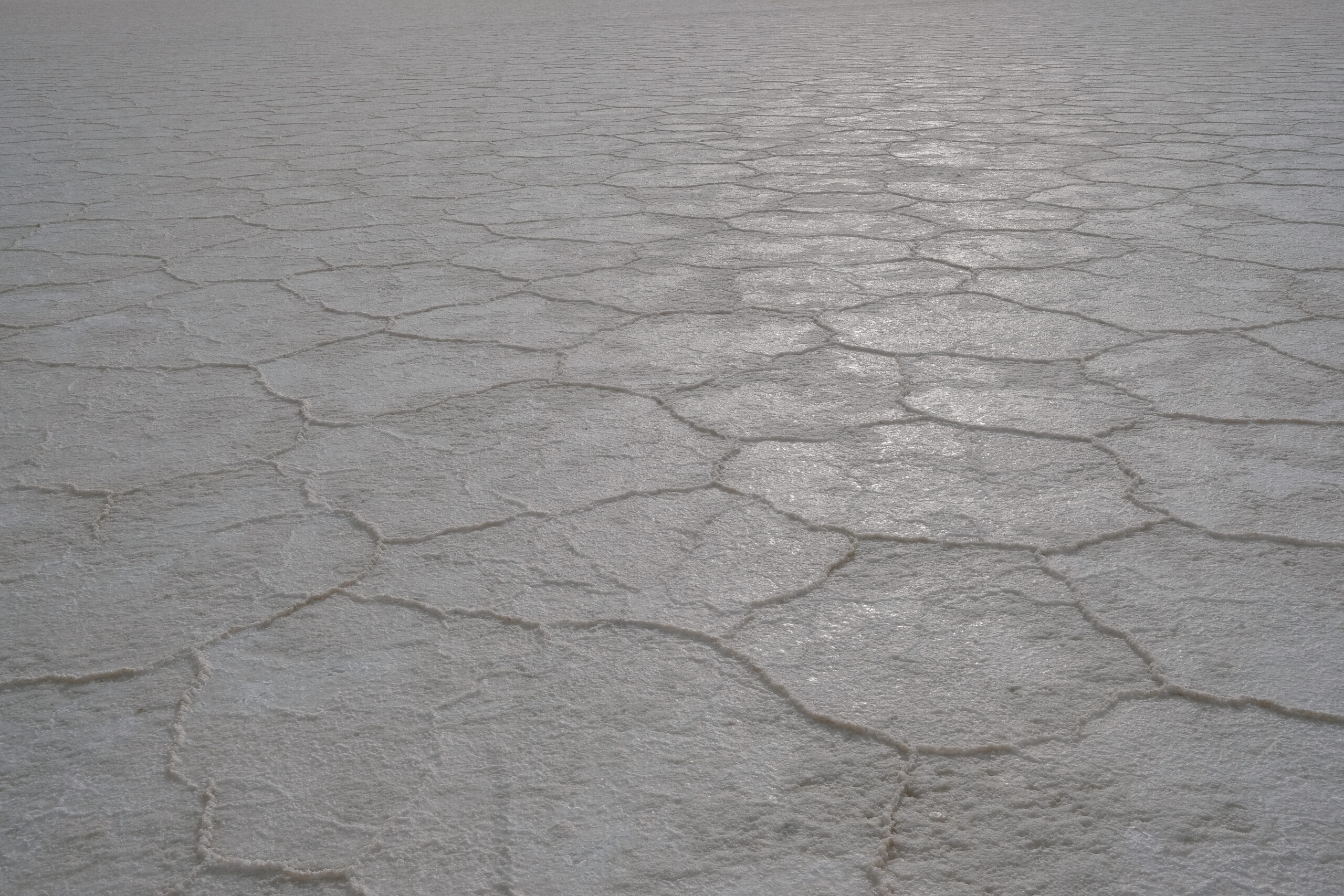
A thin layer of water sits atop the Salar de Uyuni for half the year. As this water evaporates, it leaves behind a layer of salt that begins to crystalize. The salt crystals grow into hexagonal shapes, then expand and merge with neighboring crystals to form a honeycomb pattern. So, while one may expect the surface of a salt flat to be very flat and smooth, in reality, due to the ridges of salt in the shape of honeycomb patterns that are about the length of a wheel apart, the salt flat is in fact, a very bumpy ride on a bicycle.
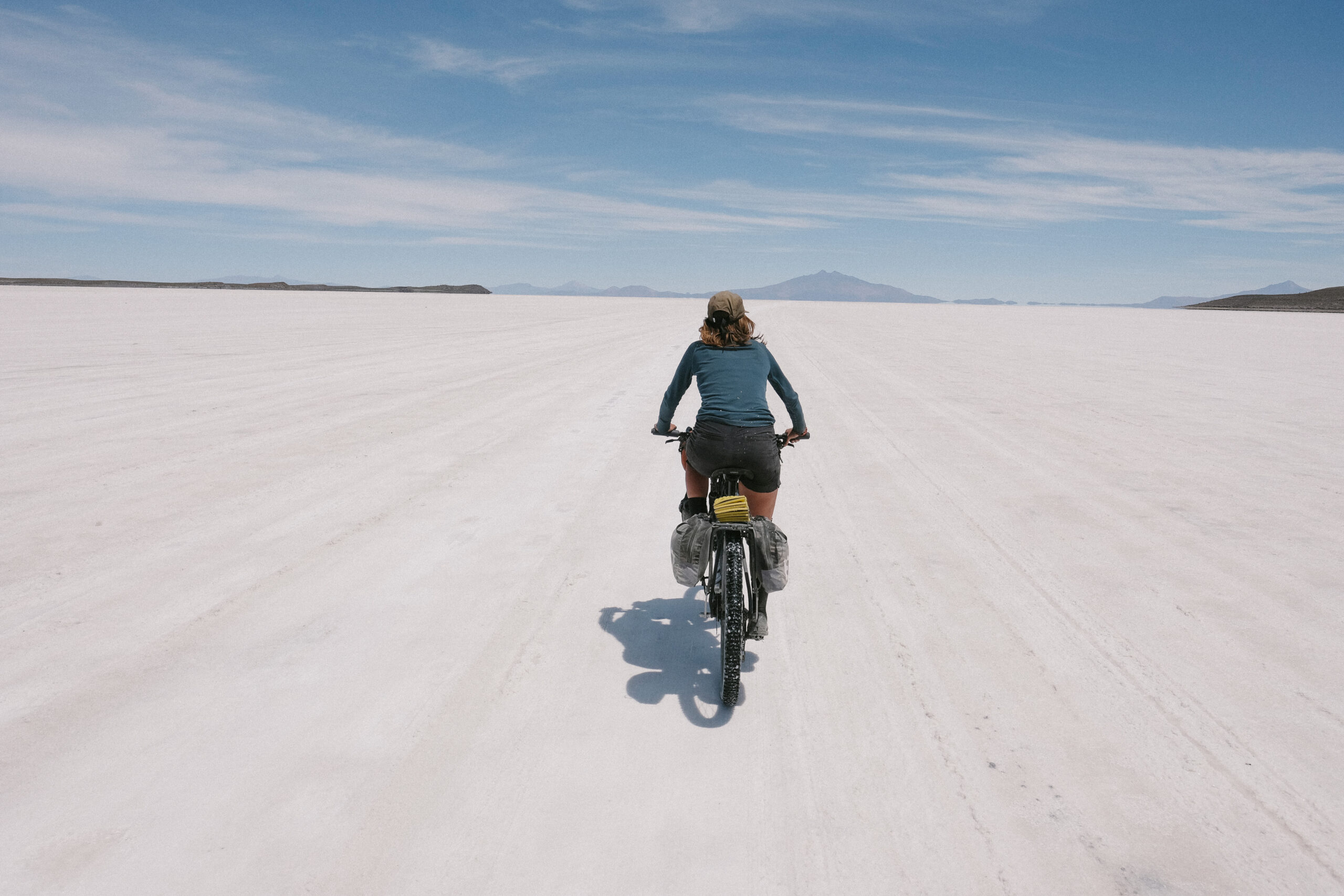
We each navigated the challenging surface differently. I was still nursing my chafed nether region and was constantly altering my line to find the smoothest possible section. While doing so, I was slowly diverting from the GPS coordinates of the route, first by a few hundred feet and, before I knew it, a half a mile. At the time, this seemed inconsequential, and from what I could tell, Adam followed a similar path. But, as we continued to pedal in separation, frustration, and discomfort, the distance between us grew greater and greater. I could no longer tell the difference between Adam and a vehicle because their prospective size was the same, a tiny dark speck in the distance in a sea of white salt. I was not particularly worried; I knew we planned to resupply water at Incahuasi and would surely regroup there before finding camp for the evening.
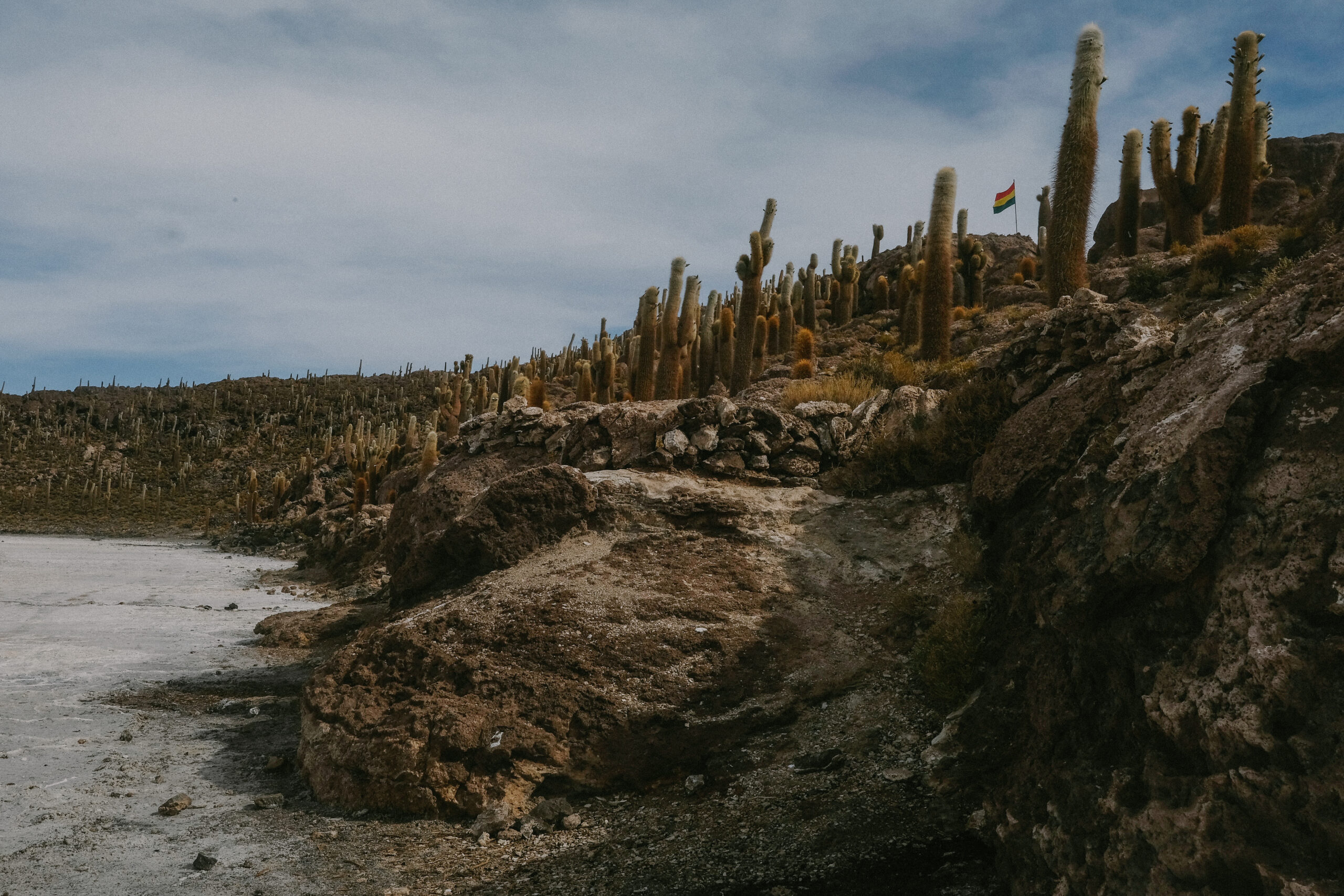
However, when I reached Incahuasi, I became overwhelmed by the number of tourists and the lack of respite from the sun exposure from above and reflecting off the ground below. I quickly became agitated by the conditions and frustrated that Adam had not waited for me in an obvious place. I assumed he had also grown frustrated by the crowd and was waiting for me down the Salar somewhere. So, I topped my water bottles off at the lone spigot, forwent purchasing any additional snacks because Adam was carrying our money, and carried down the Salar to find Adam. But Adam was nowhere to be found, and the reality that I was alone on the Salar de Uyuni as it was growing dark, the temperature was dropping, and the wind was picking up started to set in. Adam was carrying the tarp of our tent, the bulk of our food, and our cash. I had my sleeping bag, pad, and a bag of Lay’s potato chips and a couple of Snickers bars. As the night sky grew dark, so did the stories I told myself. “He abandoned me; he intentionally did this; we’re doomed as a couple; this is the end for us.” I ate all the potato chips and spent a restless night exposed on the Salar de Uyuni, blocking the cold wind from my head with my bicycle and constantly re-securing any loose items the wind was eager to blow away.
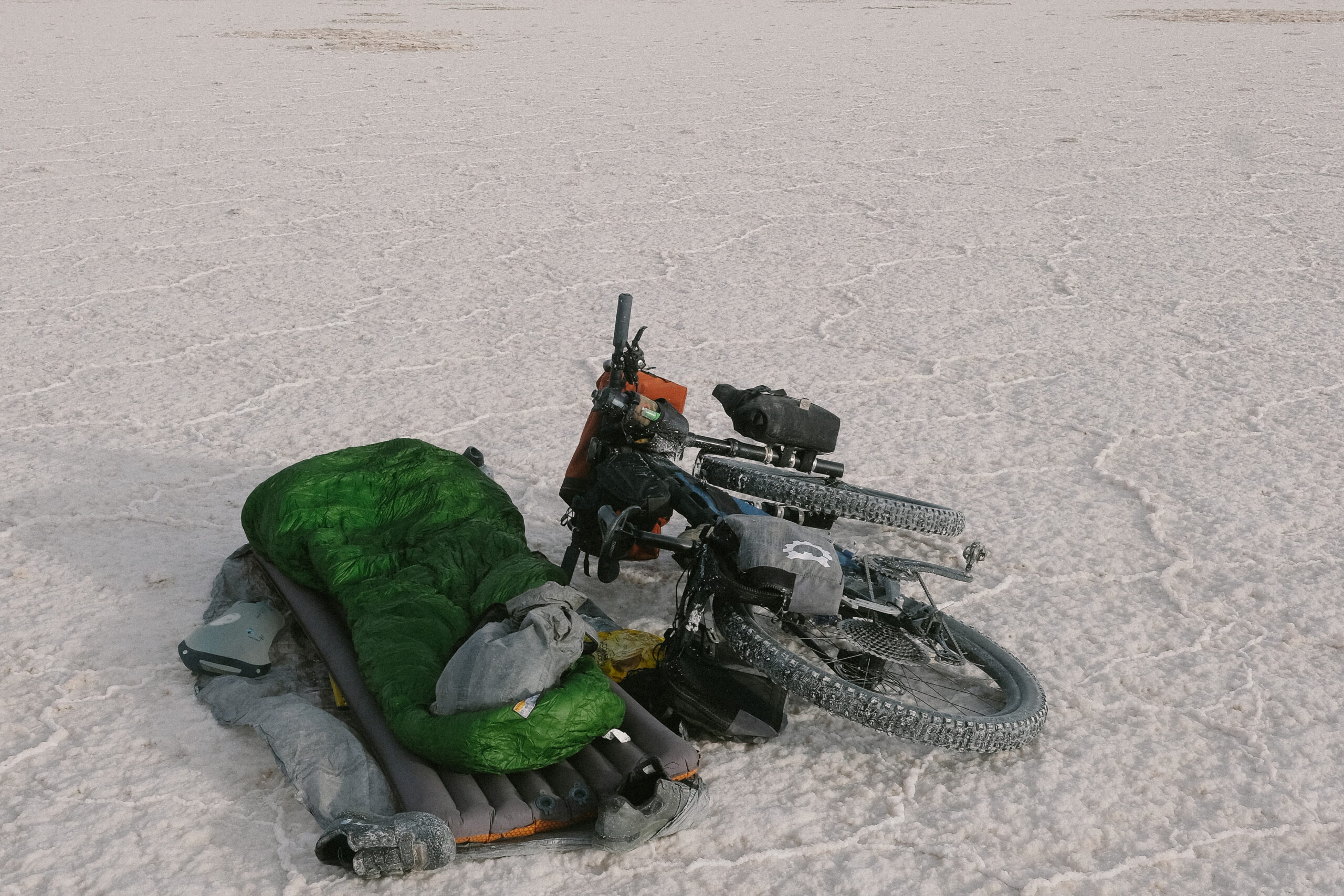
Adam and I remained separated until the following evening, for a total of 36 hours. Without a cell signal, neither knew where the other was. Later, we discovered we were likely within a mile of each other the entire time. Adam was, in fact, waiting for me at Incahuasi, in some shade he had found away from the crowds, in an area I had not bothered to look at because my mind had gone to the worst-case scenario from being alone for so long after our fight. When I never showed up, he carried on the Salar, expecting to find me, until dark. He gave up and attempted to set up camp but, in the process, lost hold of his sleeping bag, which was instantly blown away into the oblivion of the Salar de Uyuni, requiring him to carry further to the next town to find a room for the night. He had waited for me in that town for a few hours the following morning. Without knowing if I was behind or in front of him, he carried on to Uyuni just 30 minutes before I rolled up to where he had been waiting.
When we reunited, we were each exhausted, hungry, and disappointed by how we had ended what had otherwise been a perfect trip for us as a couple, how we had missed this night of camping together in such an iconic place that we had been looking forward to for the entire trip. After some rest, a shower, and a series of uncomfortable conversations, we forgave ourselves and each other. Later that evening, we laughed at the hilarity of it over a couple of large wood-fired pizzas and a bottle of wine.
When we add up the conditions that led to our separation and disconnect on the Salar de Uyuni: the challenge of the honeycomb surface, a chafed and pantless ride on the Salar de Surire, riding for days on the worst washboard roads we had ever experienced, starting our trip getting stuck in a coup d’état, it makes logical sense that by the end of our month-long trip, we were not the best version of ourselves. I believe this perspective is an essential lens to use before passing judgment on the relationship and for having compassion for ourselves and each other.
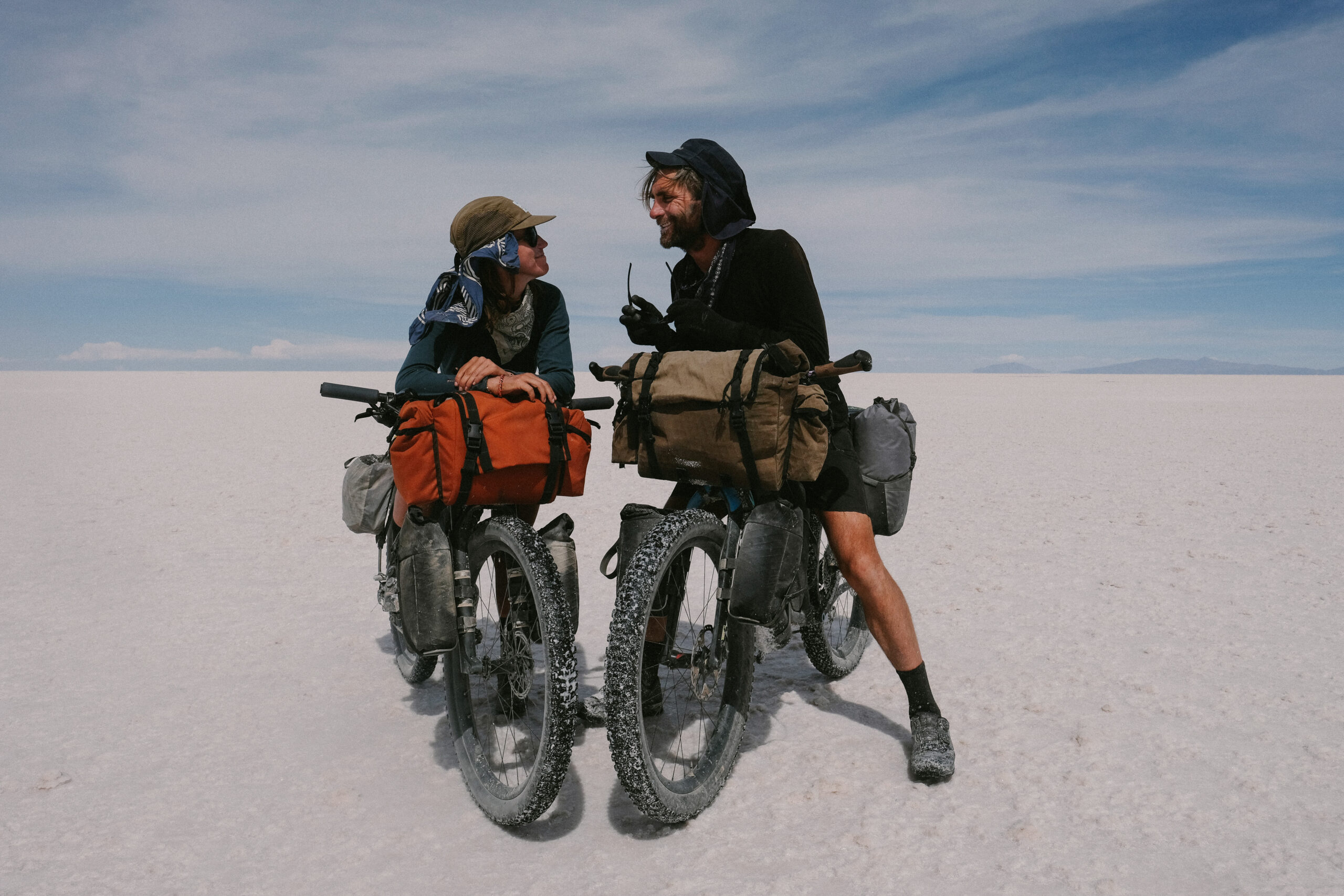
This trip represents the extreme highs and lows that one can experience while bikepacking with your partner. In the second installment of Bikepacking for Couples, I will outline some considerations for bikepacking with your significant other, as well as some strategies that I have gleaned from my experiences, relationships, and years of therapy and pursuit of self-development to assist other couples in finding joy, compassion, and managing conflict while traveling by bicycle.




